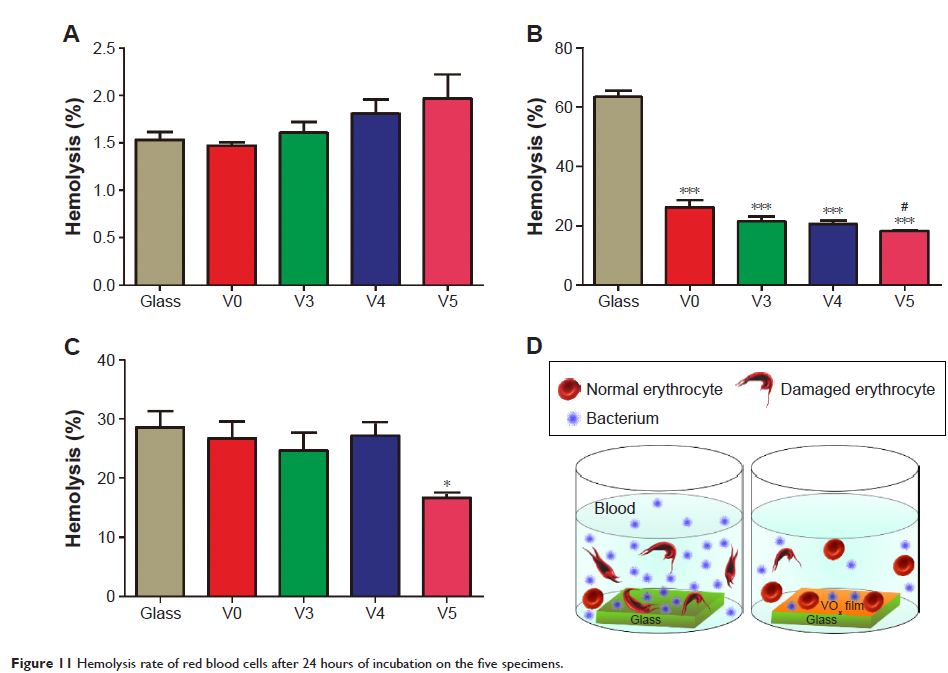9 5 7 4 9
论文已发表
注册即可获取德孚的最新动态
IF 收录期刊
- 3.3 Breast Cancer (Dove Med Press)
- 3.4 Clin Epidemiol
- 2.5 Cancer Manag Res
- 2.9 Infect Drug Resist
- 3.5 Clin Interv Aging
- 4.7 Drug Des Dev Ther
- 2.7 Int J Chronic Obstr
- 6.6 Int J Nanomed
- 2.5 Int J Women's Health
- 2.5 Neuropsych Dis Treat
- 2.7 OncoTargets Ther
- 2.0 Patient Prefer Adher
- 2.3 Ther Clin Risk Manag
- 2.5 J Pain Res
- 2.8 Diabet Metab Synd Ob
- 2.8 Psychol Res Behav Ma
- 3.0 Nat Sci Sleep
- 1.8 Pharmgenomics Pers Med
- 2.7 Risk Manag Healthc Policy
- 4.2 J Inflamm Res
- 2.1 Int J Gen Med
- 4.2 J Hepatocell Carcinoma
- 3.7 J Asthma Allergy
- 1.9 Clin Cosmet Investig Dermatol
- 2.7 J Multidiscip Healthc

利用多种价态钒纳米颗粒的官能化表面改性来治疗种植体相关血液感染
Authors Wang J, Zhou H, Guo G, Cheng T, Peng X, Mao X, Li J, Zhang X
Received 5 December 2016
Accepted for publication 1 March 2017
Published 18 April 2017 Volume 2017:12 Pages 3121—3136
DOI https://doi.org/10.2147/IJN.S129459
Checked for plagiarism Yes
Review by Single-blind
Peer reviewers approved by Dr Alexander Kharlamov
Peer reviewer comments 2
Editor who approved publication: Dr Linlin Sun
Abstract: Bloodstream infection, especially with implants involved, is an often
life-threatening condition with high mortality rates, imposing a heavy burden
on patients and medical systems. Herein, we firstly deposited homogeneous
vanadium metal, V2O3, VO2, and V2O5 nanofilms
on quartz glass by magnetron sputtering. Using these platforms, we further
investigated the potential antimicrobial efficiency of these nano-VOx films
and the interactions of human erythrocytes and bacteria (methicillin-resistant Staphylococcus aureus and Pseudomonas aeruginosa )
with our samples in a novel cell–bacteria coculture model. It was demonstrated
that these nano-VOx precipitated favorable
antibacterial activity on both bacteria, especially on S. aureus , and this
effect increased with higher vanadium valence. A possible mechanism accountable
for these results might be elevated levels of vanadium-induced intracellular
reactive oxygen species. More importantly, based on hemolysis assays, our
nano-VOx films
were found to be able to kill prokaryotic cells but were not toxic to mammalian
cells, holding the potential for the prevention of implant-related hematogenous
infections. As far as we know, this is the first report wherein such nano-VOx films
have assisted human erythrocytes to combat bacteria in a valence-dependent
manner. Additionally, vanadium ions were released from these nano-VOx films
in a sustained manner, and low-valence films possessed better biocompatibility
with human fibroblasts. This work may provide new insights for biomedical
applications of inorganic vanadium compounds and attract growing attention in
this field. From the perspective of surface modification and functionalization,
this study holds promise to avail the prophylaxis of bloodstream infections
involving implantable biomedical devices.
Keywords: surface modification, red blood cell,
antibacterial activities, vanadium, nanomaterials
